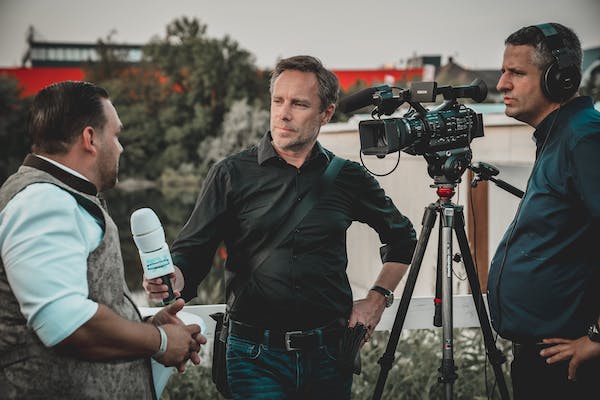
02 Jul ASK A BROADCASTING FUTURIST: WHERE IS THE FUTURE OF TV, RADIO, AND PODCASTING HEADING?
You don’t have to be a broadcasting futurist or keynote speaker to see just how much the world of TV and radio have been transformed in recent months. And each passing week seems to (yikes) bring new changes in how content (and streaming media) is created, distributed, and consumed. So let’s put on our broadcasting futurist thinking caps and contemplate where this path leads going forward.
Before we dive in further though, a quick reminder: Over-the-top (or OTT) streaming media offerings such as Netflix, Amazon Prime Video, and Disney+, have disrupted the broadcasting landscape by offering on-demand services. The firms’ respective apps now allow viewers to access a vast library of content at their convenience, bypassing traditional cable and satellite subscriptions. With the increasing popularity of OTT solutions, as broadcasting futurists note, traditional broadcasters are adapting by launching their own streaming services to stay relevant in the digital era.
However, keep in mind that live streaming has also gained immense popularity, enabling broadcasters to engage with their audiences in real-time. Video providers like YouTube Live, Facebook Live, and Twitch provide opportunities for individuals, businesses, and content creators to broadcast events, performances, and discussions to a global audience. The integration of real-time interaction features, such as live chat and audience participation, enhances viewer engagement and fosters a sense of community.
With the abundance of content available, broadcasters are increasingly using data analytics and machine learning algorithms to personalize the viewing experience to boot. Recommendation systems analyze user preferences, viewing history, and behavior patterns to suggest relevant content. By delivering personalized recommendations, media providers can keep viewers engaged and provide tailored content that aligns with their interests.
Let’s not forget either how AR and VR technologies are revolutionizing the way audiences engage with content. Companies and brands are now using these immersive technologies to enhance storytelling and provide interactive experiences. As a quick overview, AR overlays graphics and information onto real-world environments, while VR creates virtual environments that users can explore. Collectively, such extended reality experiences enable creative types to develop captivating narratives and transport viewers to new and exciting realms.
On another front, podcasting has emerged as a popular broadcasting trend, allowing individuals and organizations to create and distribute audio content on various topics. The convenience of on-demand listening and the rise of distribution channels like Spotify and Apple Podcasts have contributed to the growth of podcasting. To wit, this unique form of broadcasting offers a unique opportunity for niche content creators to connect with dedicated audiences and build communities around their shows.
And, naturally, mobile devices have become one of the primary mediums for content consumption, prompting broadcasters to optimize their content for smaller screens. Mobile streaming apps provide users with the flexibility to watch their favorite shows on the go. Additionally, the concept of the second screen experience has gained traction, where viewers use their mobile devices to interact with content simultaneously. This can include voting, participating in polls, or accessing supplementary information related to the broadcast.



